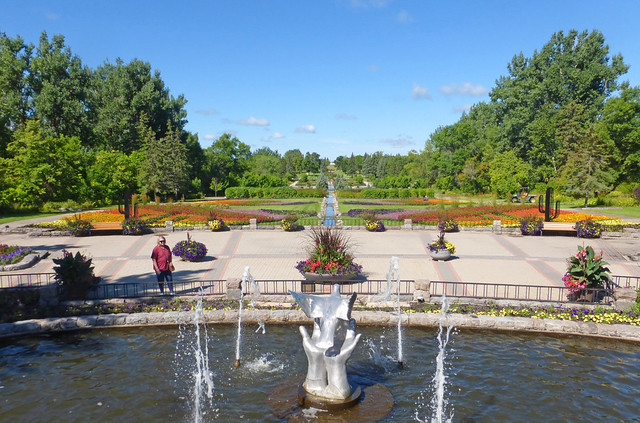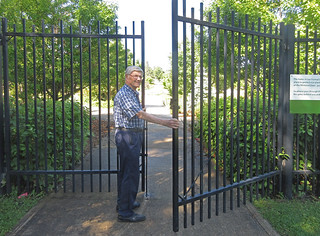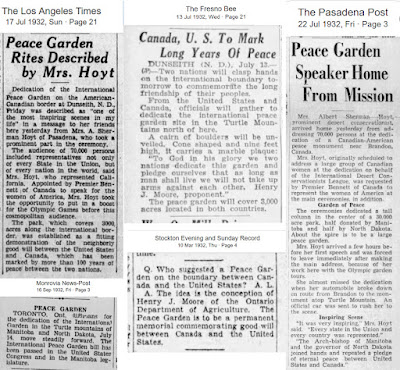After visiting so many interesting sites along the way, we finally reached The International Peace Garden on the border between Canada and the United States. Located halfway between Boissevain, Manitoba and Dunseith, North Dakota, the garden is more likely to be an answer to a trivia question than a spot most people have visited.
The garden was conceived by Dr. Henry J. Moore of the Ontario Department of Agriculture. Moore presented the concept to the National Association of Gardeners of America in August of 1929 and the idea quickly caught on among the garden community.
While a bit off the normal tourist path, it was located on what was planned to become the "Canada-to-Canal Highway," stretching from Churchill, Manitoba, all the way through Mexico, Central America to Cape Horn. While similarly planned trans-continental highways like the Lincoln Highway and the Yellowstone Trail did emerge into reality, the "Canada-to-Canal" venture scarcely left a trace.
The visitor center at the garden presents a time-line of the garden extending from the 1929 proposal to the present.

And, while I did capture an image of a stone cairn topped by an identifying sign at the entrance, I completely missed the famous cairn carefully assembled with stones from both sides of the border as the first structure built for the opening in 1932.
Here is my modern cairn.

And here, borrowed from elsewhere on the Internet, is the real cairn as seen today along with an older postcard view of it.
The dedication of the Peace Garden in 1932 attracted 50,000 visitors to this remote area. (Some sources at the time claimed 70,000) This was a remarkable gathering of early automobiles.

This Peace Garden map highlights several of our stops as we walked along the central route outlined in green. (Official map is here.)
The view from above the Sunken Garden is particularly attractive.


Here are two closer views.


The central area is enclosed by a fence to ward off the deer population that plagues all gardeners in our mid-west area.


A carillon bell in a tower sounds each fifteen minutes on one side of the central area.

On the opposite side, a 9/11 memorial has been constructed from metal salvaged from the World Trade Center to remind visitors that the world is not always a peaceful place.

A Canadian maple leaf symbol is well laid out in flowers.

An occasional sculpture, like this peacock, appears along the return path.

Serving as a reminder not just of peace, but also, friendship between Canada and the United State, the Peace Garden District of the American Nurses' Association erected a Florence Nightingale monument in 1965 to celebrate the contribution of nurses in both countries. Article from the Mandan Morning Pioneer.

Overall, we were a quite disappointed with the garden, considering that it charges $25 Canadian or American dollars per car to enter. One should scale back expectations of beds and beds of beautiful flowers if you intend to visit this garden, because as of the date of our visit, it was sorely lacking. It's a wonderful idea but the execution just isn't there. Of the three formal gardens we saw on the trip, this definitely ranks third - and was the only one charging admission.
Here are a few more newspaper clippings, most focused on the opening of the garden in 1932.










No comments:
Post a Comment